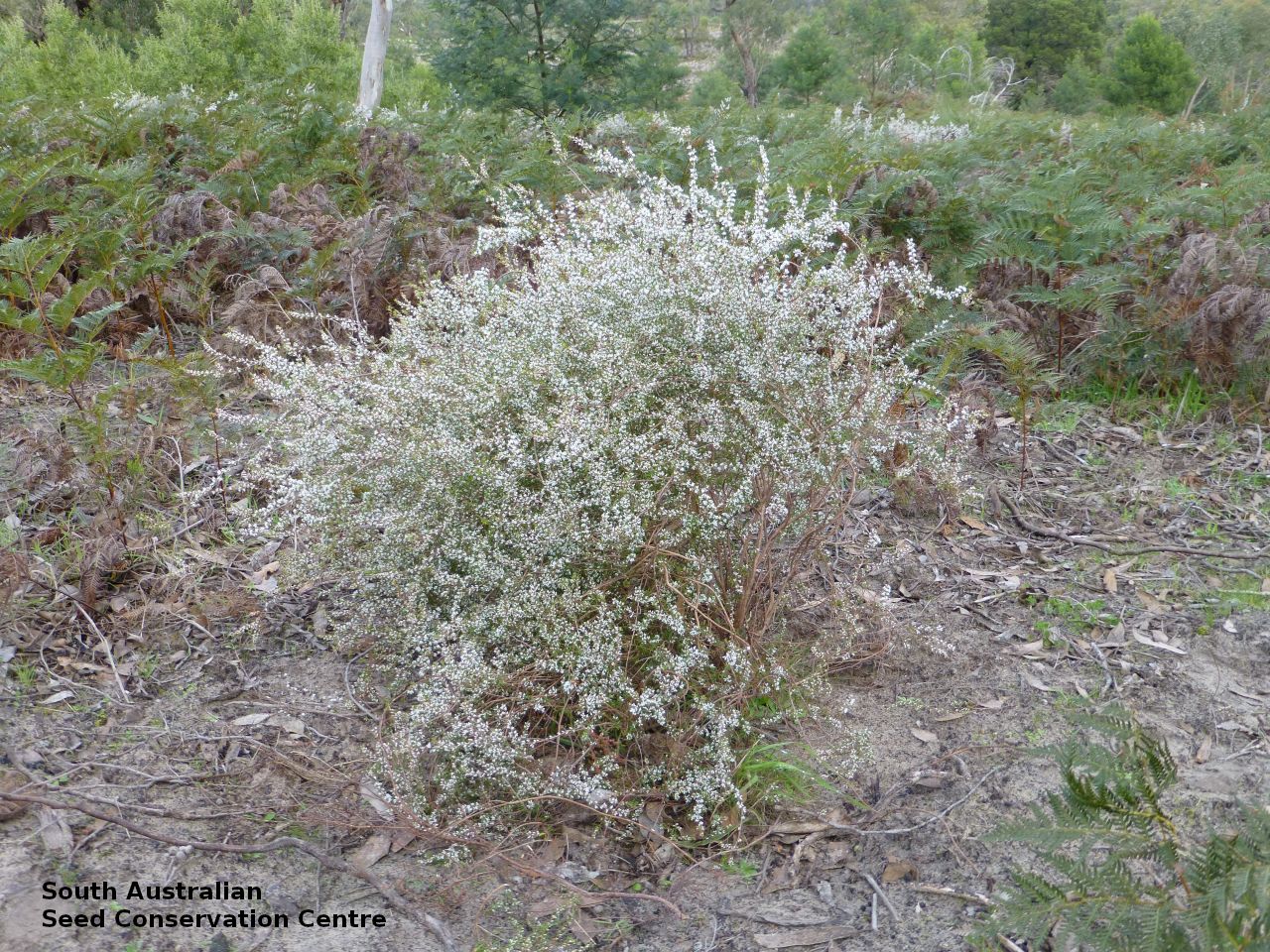
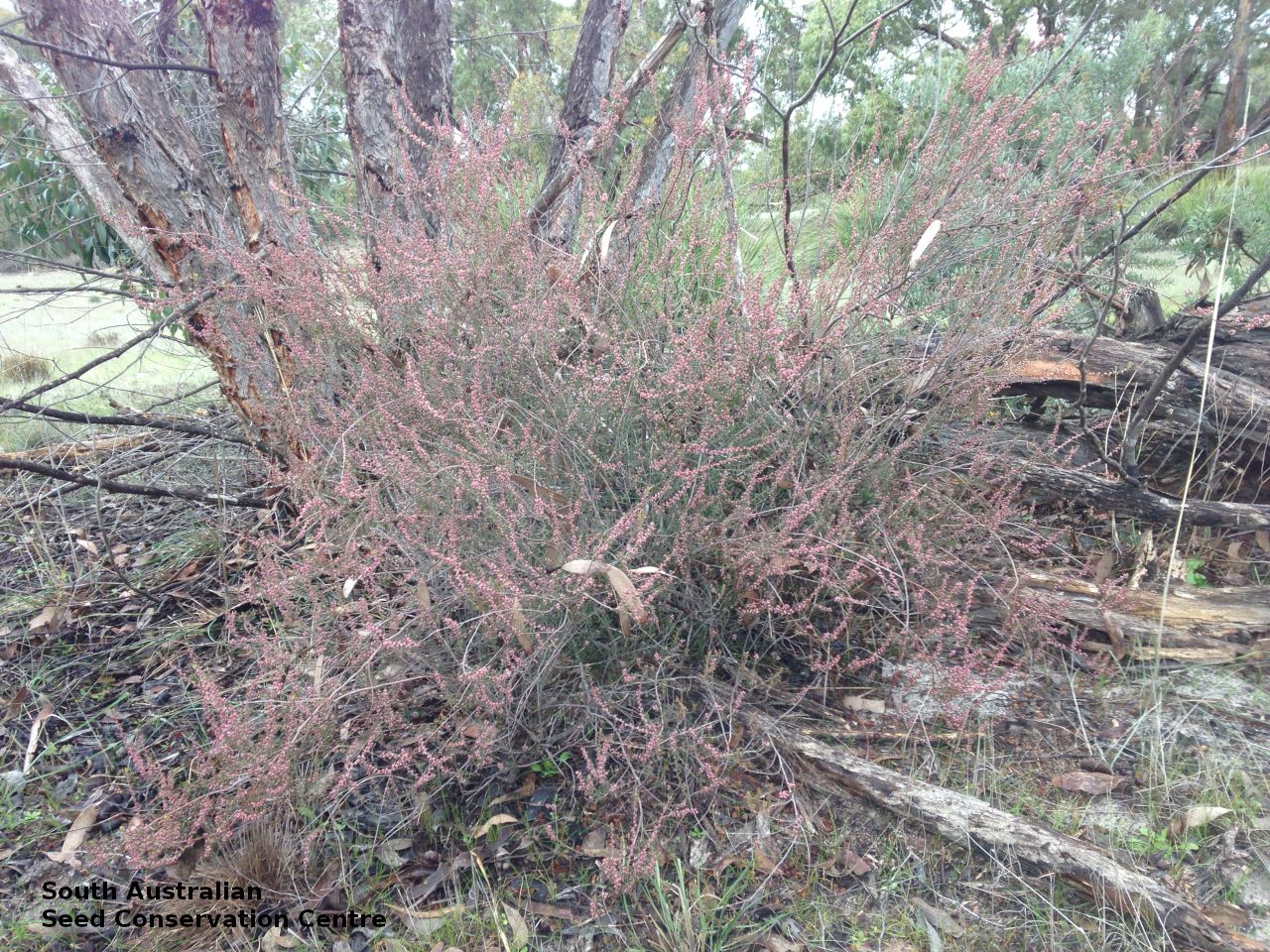
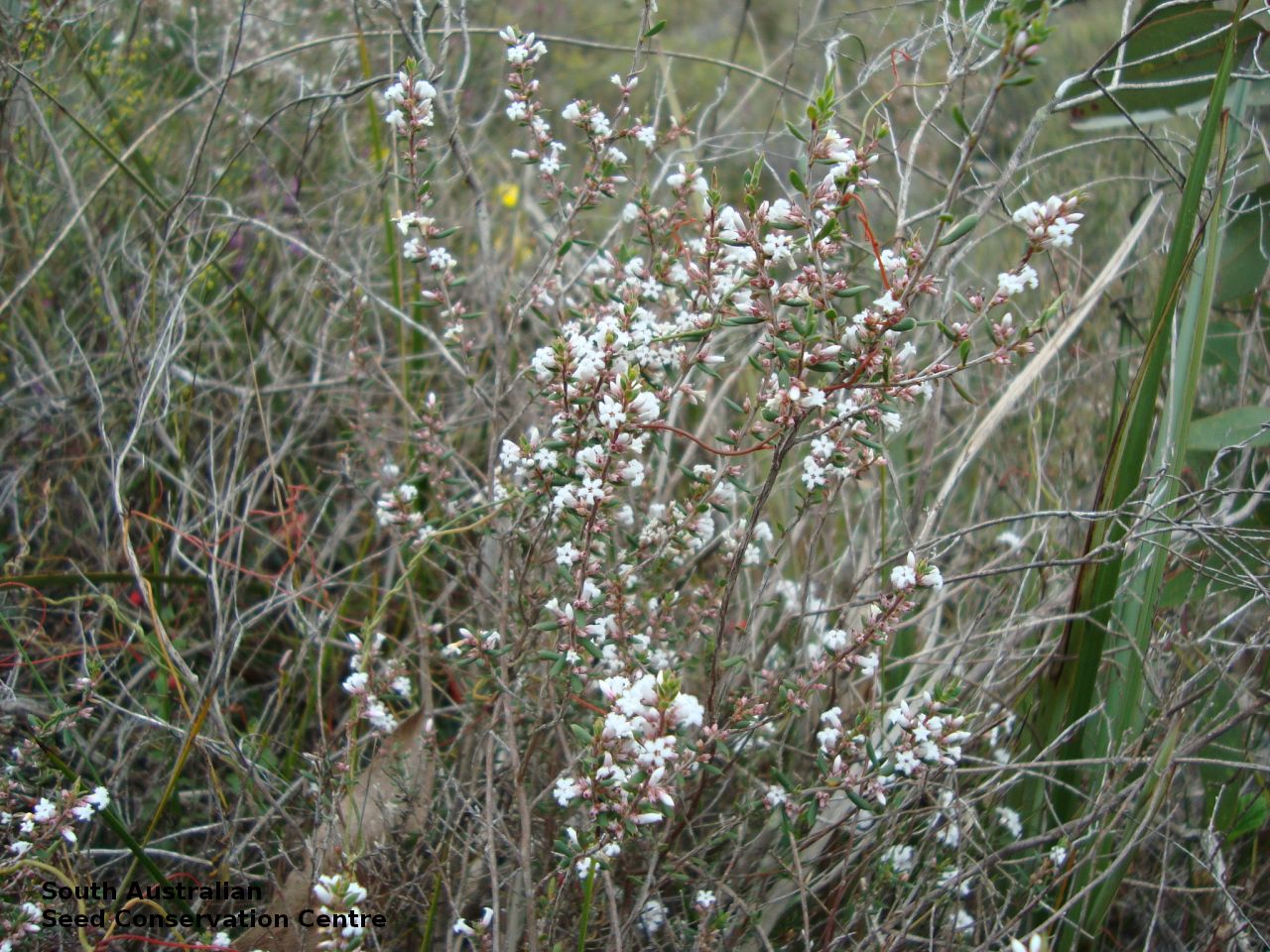
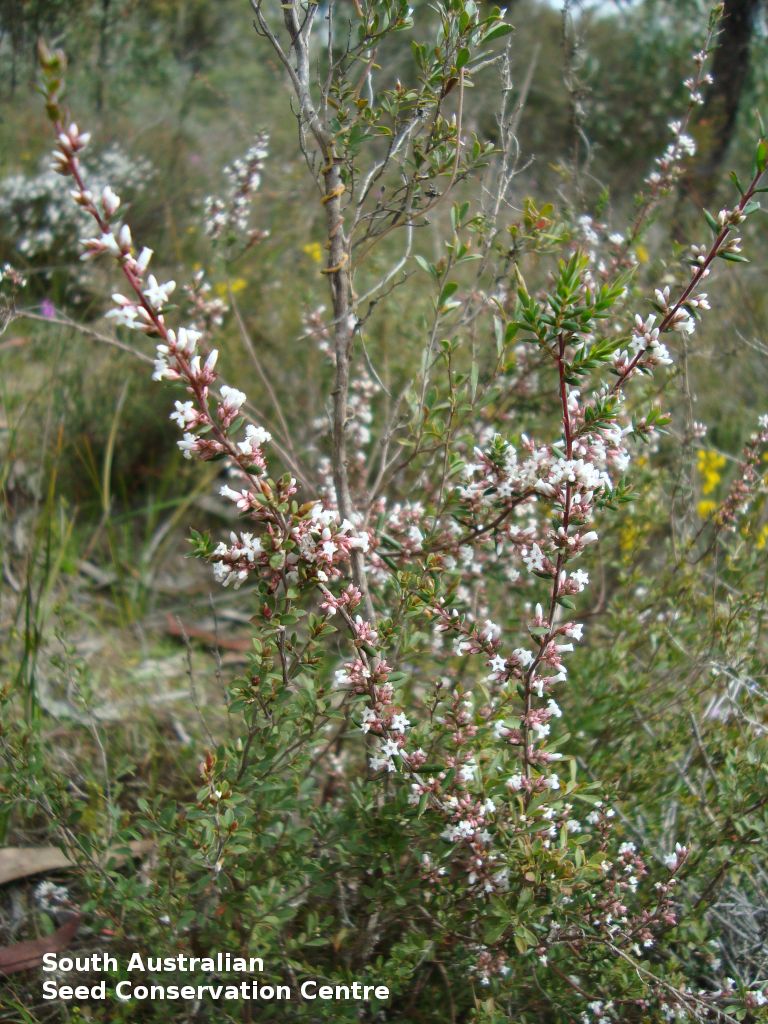
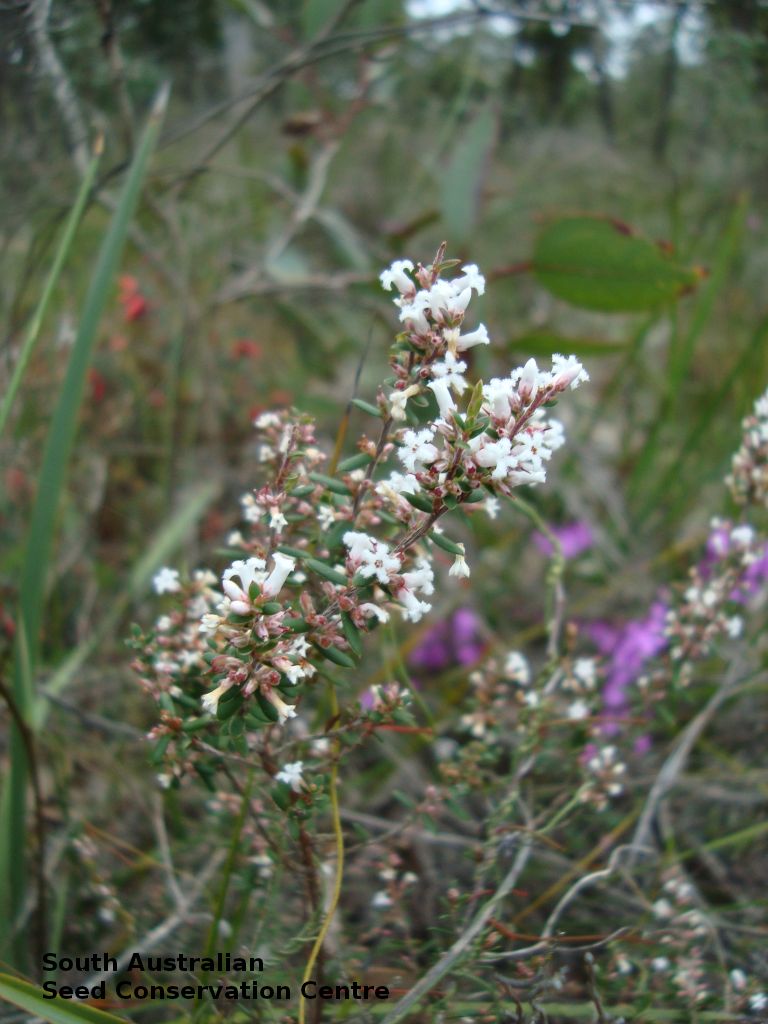
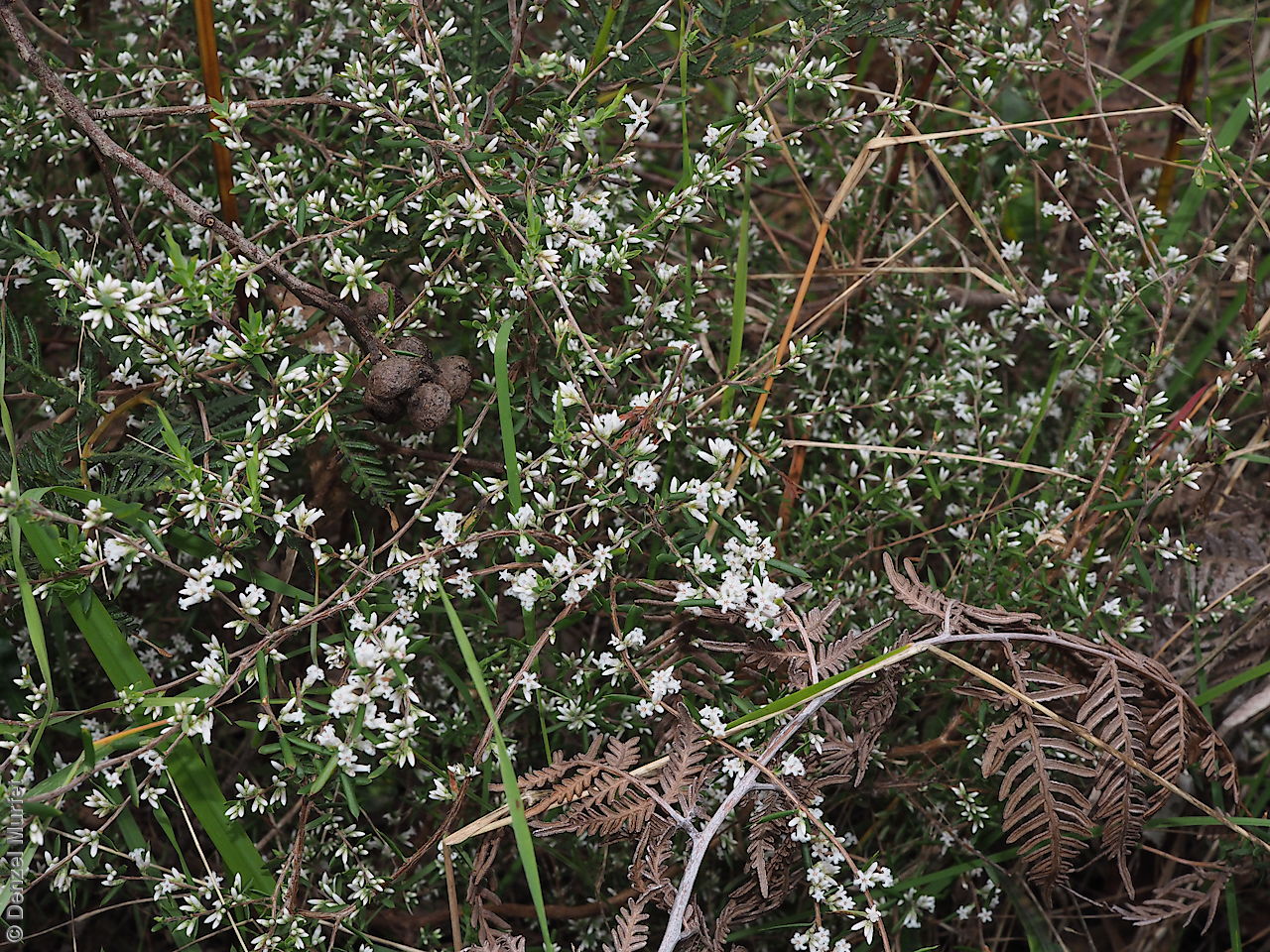
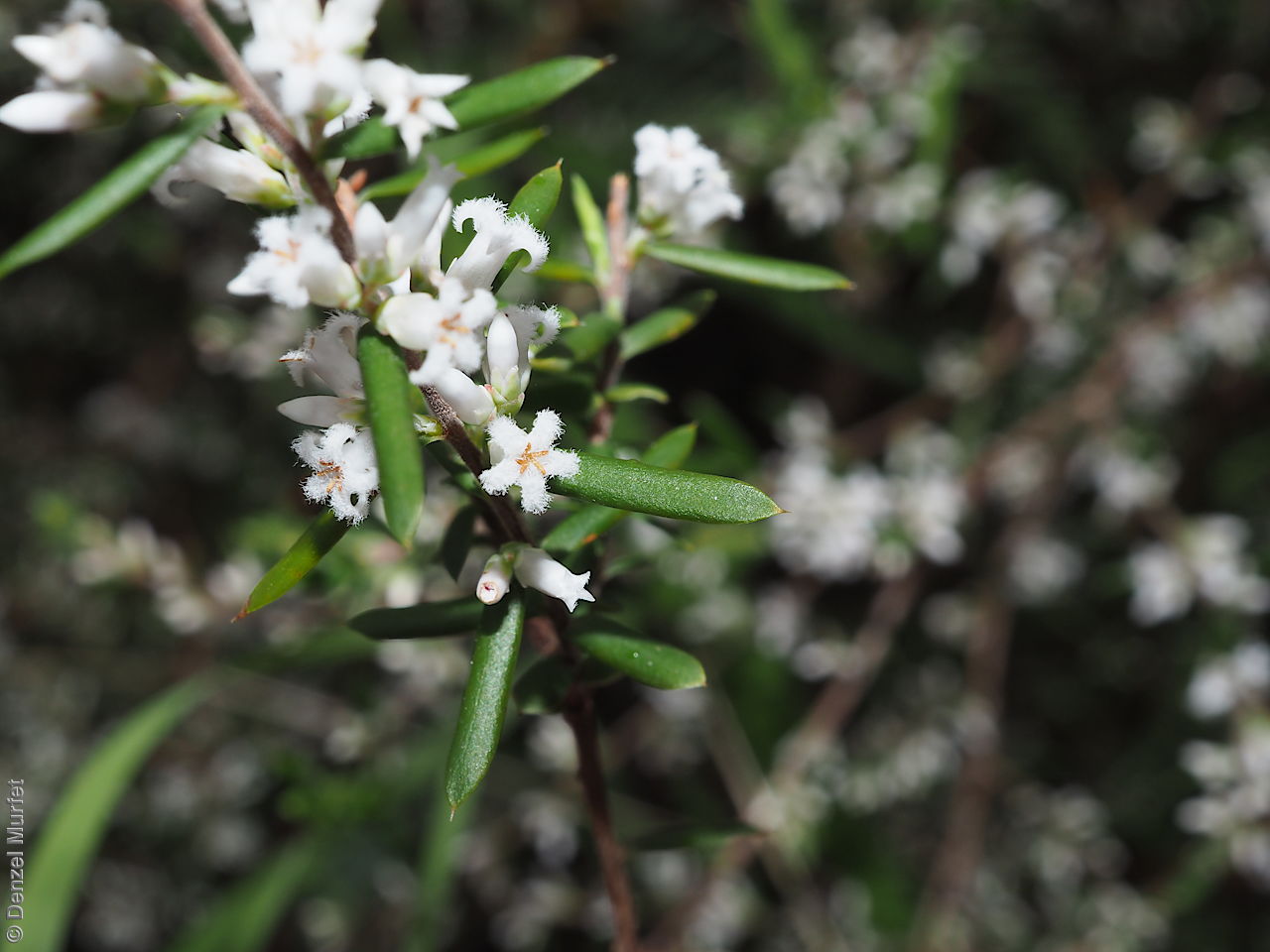
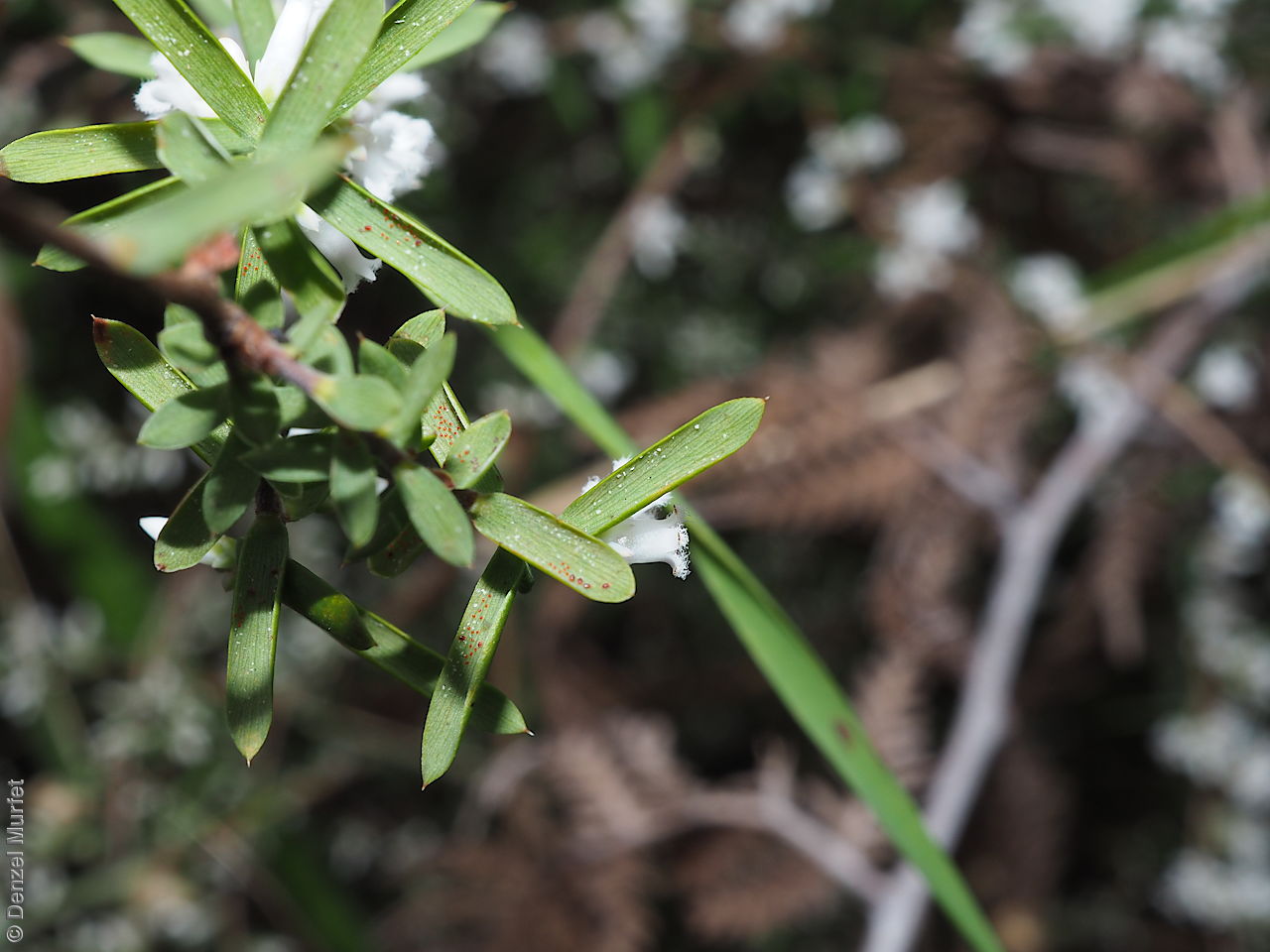
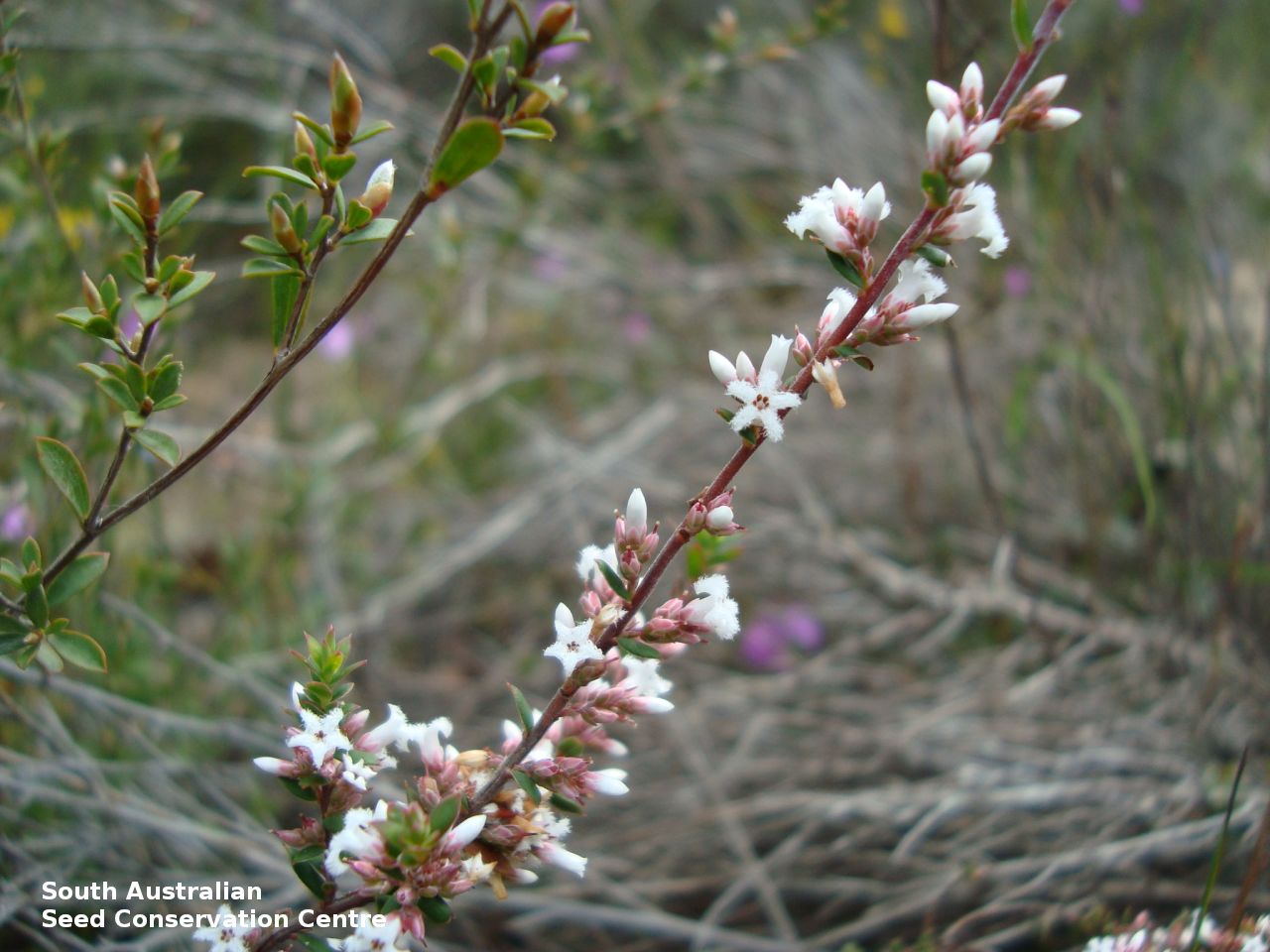
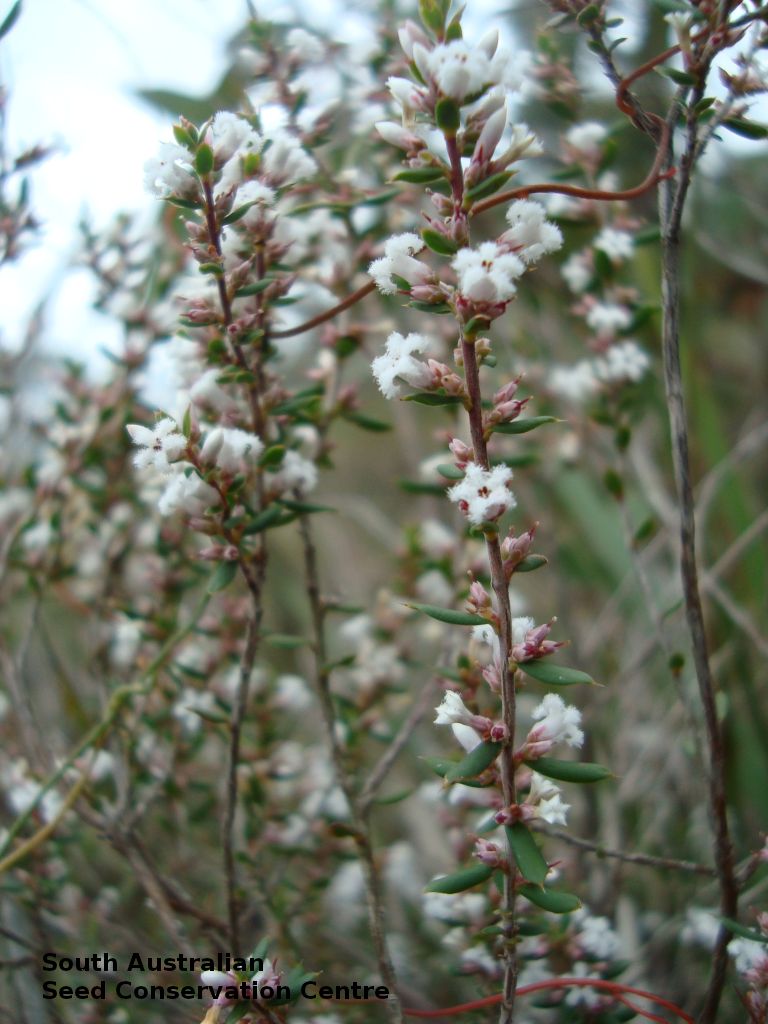
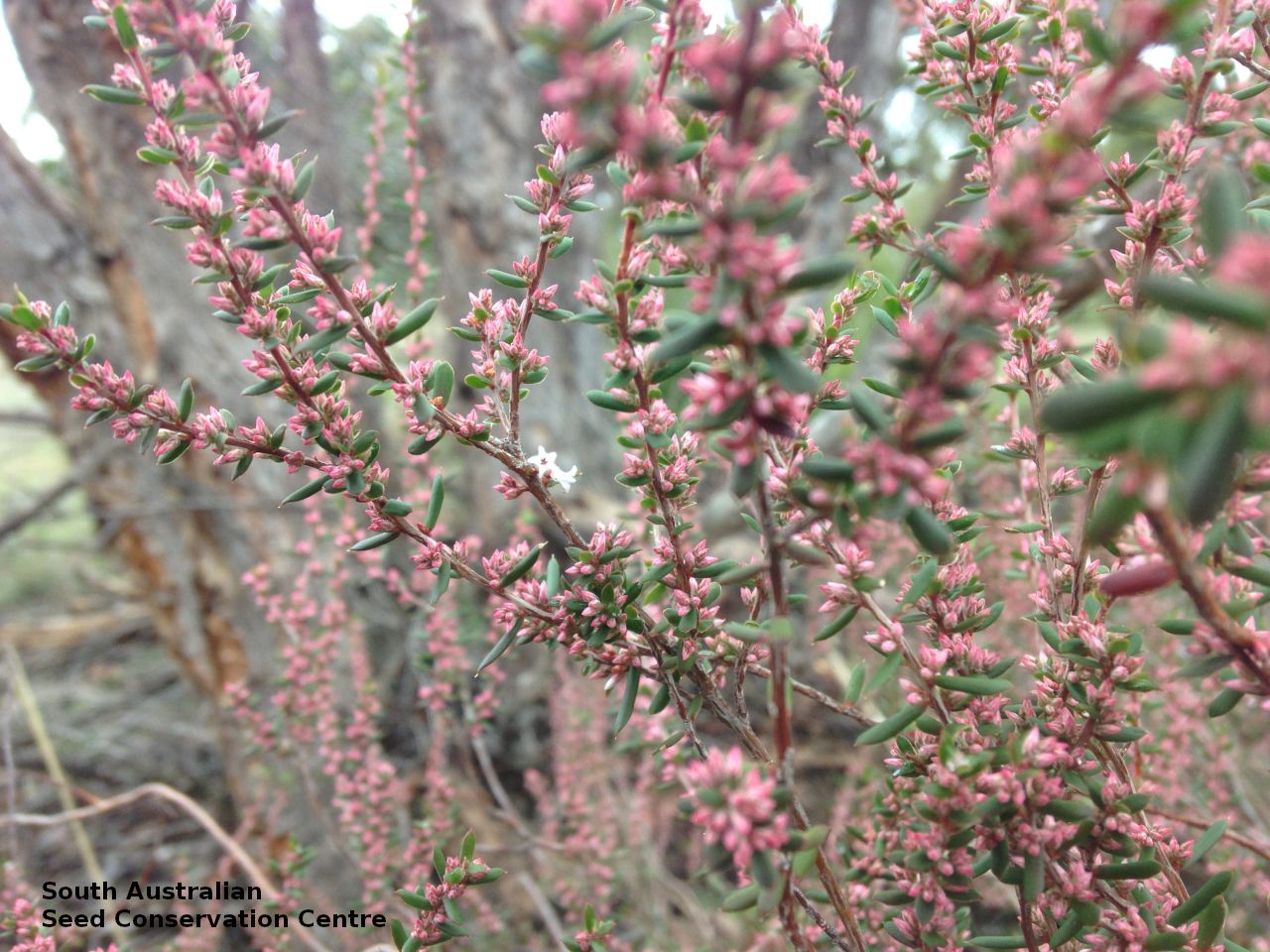
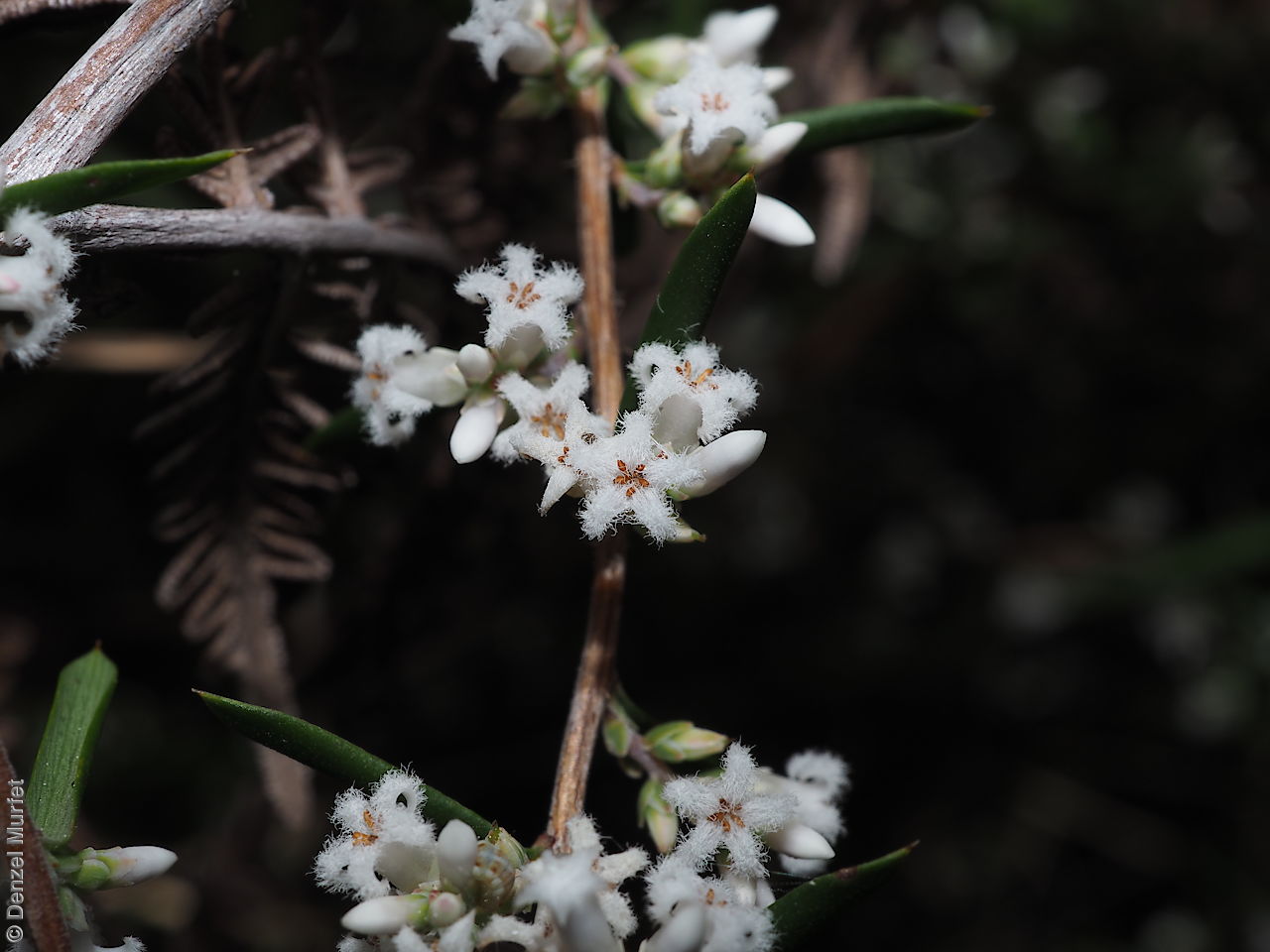
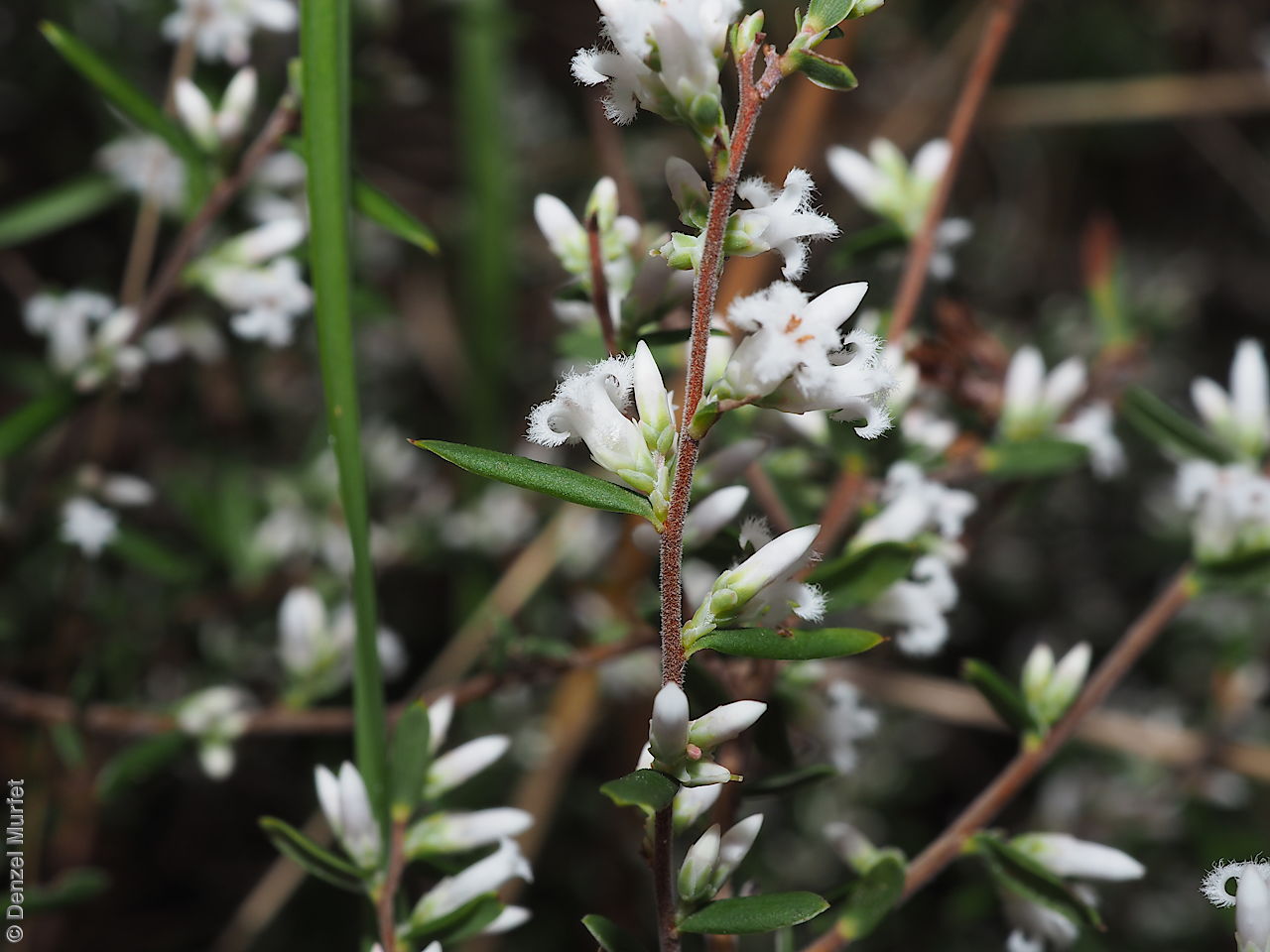
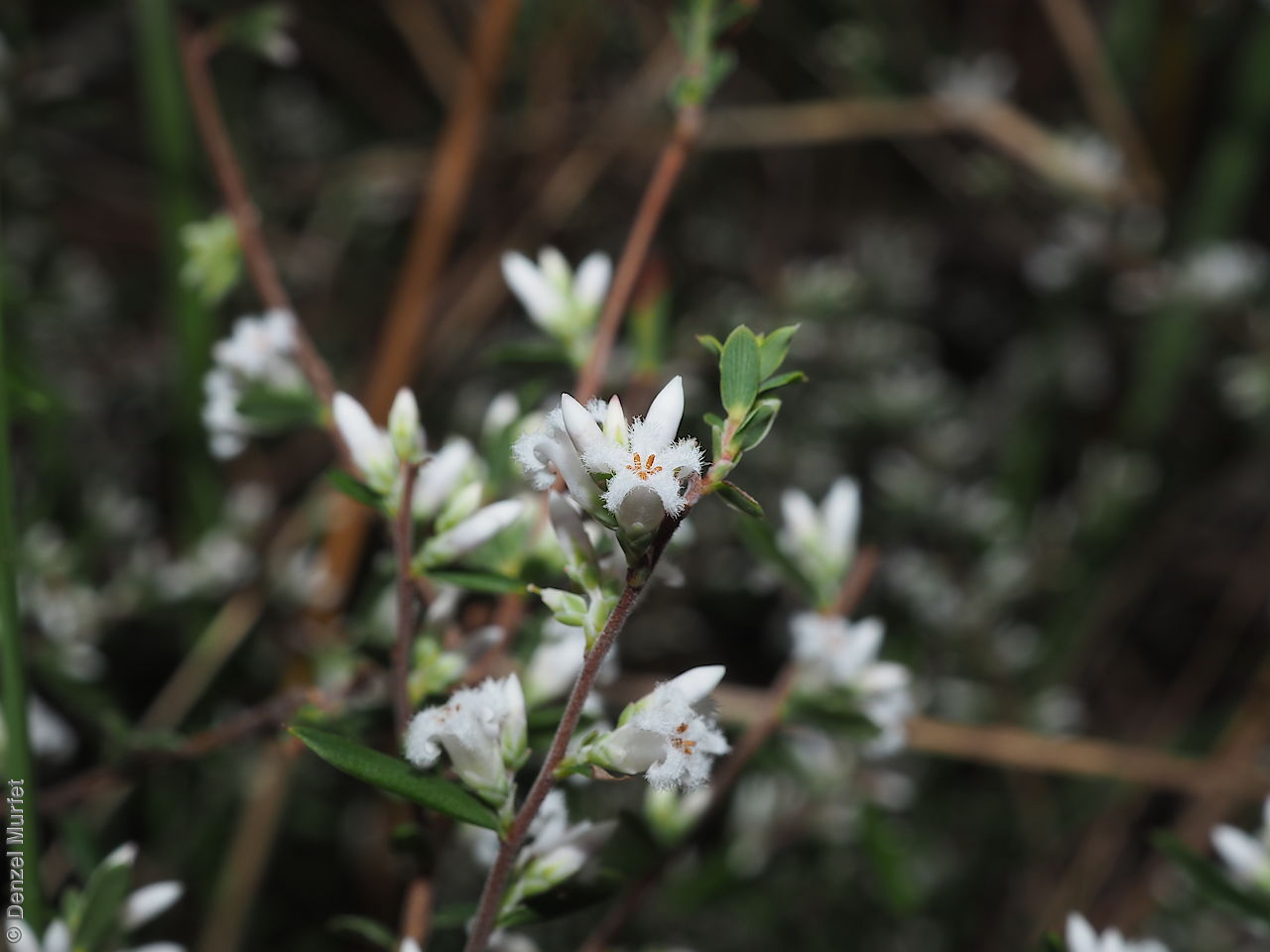
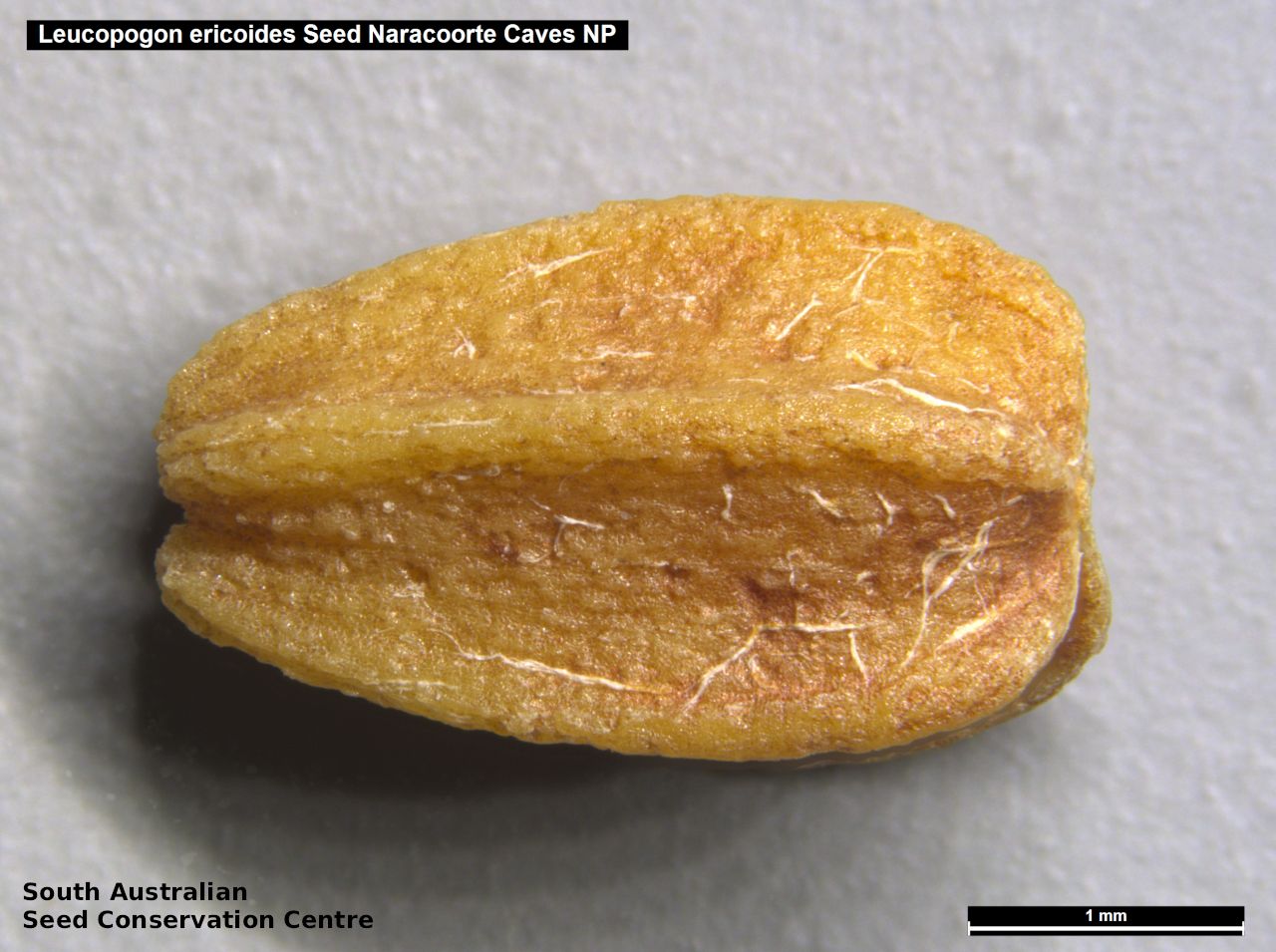
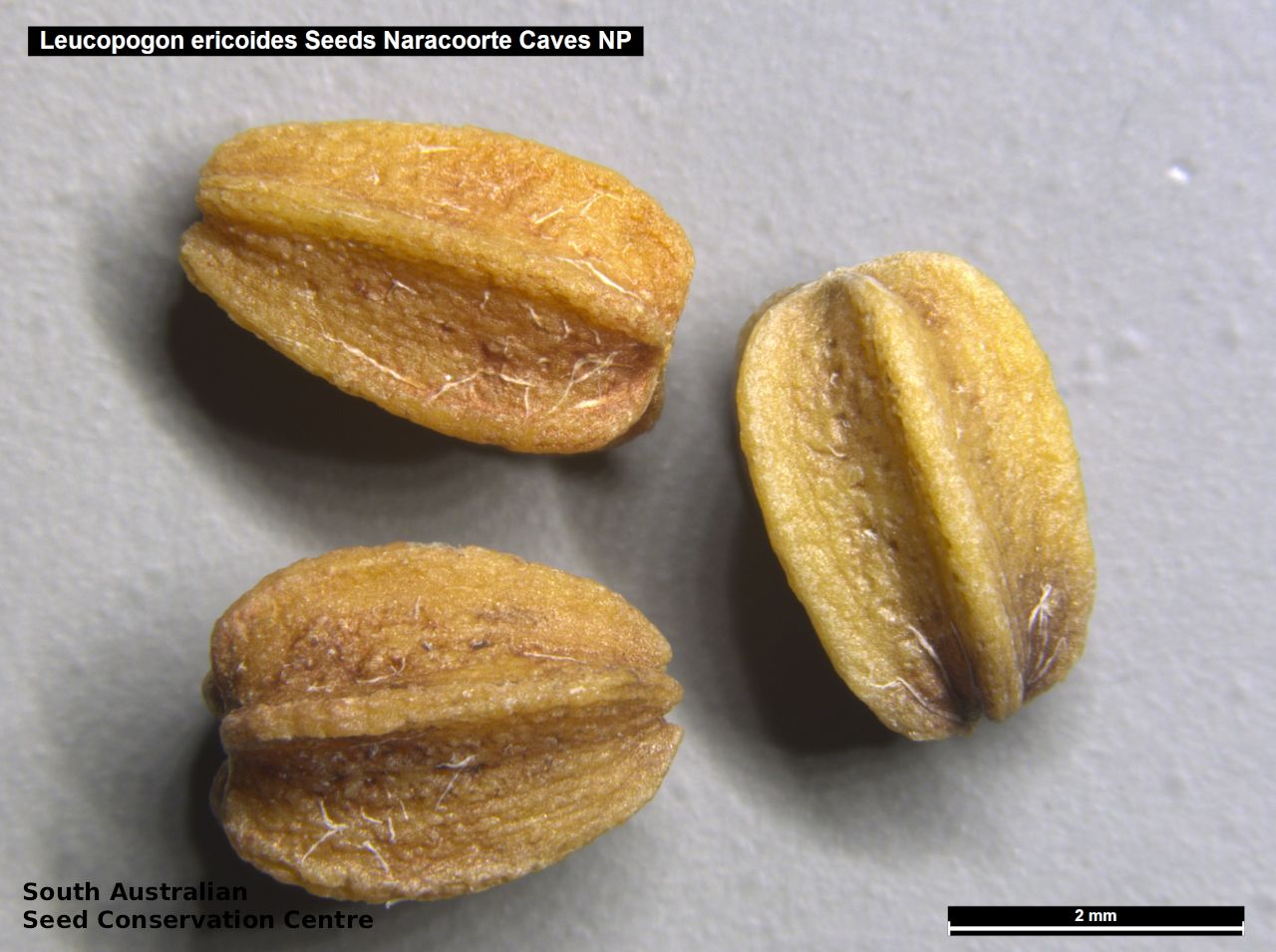
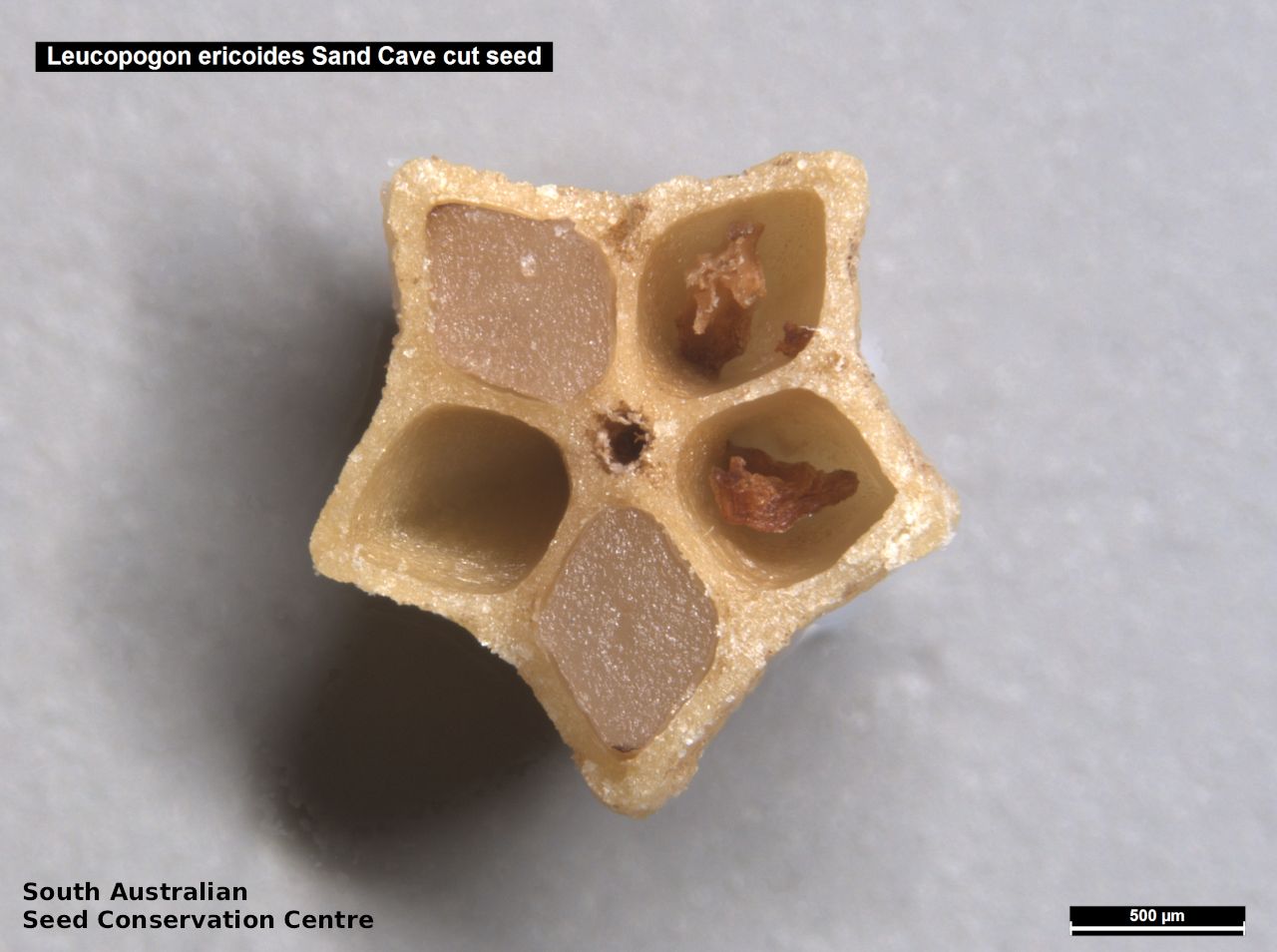
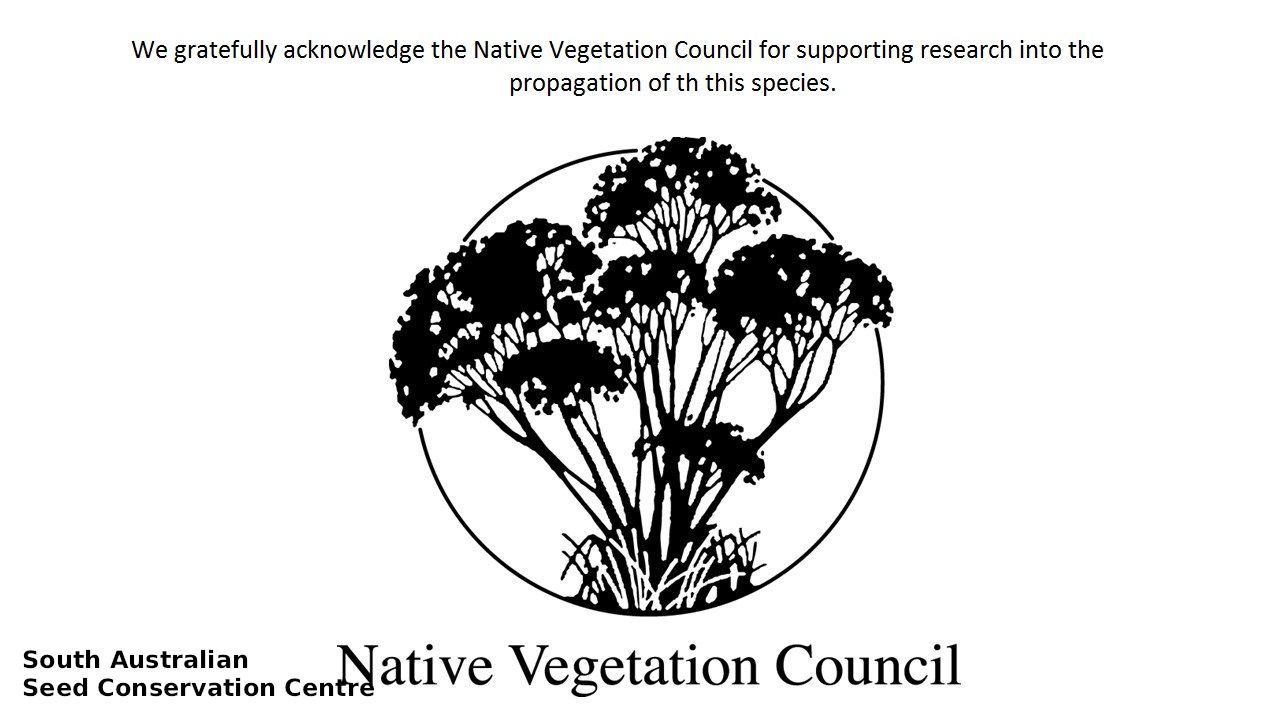


Botanical art
Prior names
Leucopogon ericoides
Etymology
Styphelia from the Greek 'styphelos' meaning hard or rough; alluding to the stiff prickly-pointed leaves. Ericoides, from Greek meaning heath-like, possibly referring to the resemblance to plants in the genus Erica.
Distribution and status
Found in the South-east in South Australia, growing on sandy loams or on white sand in heathland and dry sclerophyll forest. Also found in New South Wales, Victoria and Tasmania. Native. Common in South Australia. Common in the other States.
Herbarium region: South Eastern
NRM region: South East
AVH map: SA distribution map (external link)
Plant description
Slender shrub 100 cm high, with hairy branches. Leaves, spreading to sub-erect; long to elliptic, to 15 mm long and 2.5 mm wide; convex, glabrous, hairy above and below; margins entire, often strongly recurved; apex obtuse or acute. Inflorescence in axillary spikes to 9 mm long, with 2-8 white or pale pink (pink in bud) densely bearded flowers. Flowering between August and November. Fruits are asymmetric ovoid fruit to 5.7 mm long and 2. mm wide; sparsely hairy with soft woody endocarp containing 4 to 5 locules that may be filled with seed. Seeds are soft, white longitudinal seed. Seed embryo type is linear, underdeveloped.
Seed collection and propagation
Collect seeds between October and December. Collect fruits by hand when ripe. Check to see if locules are filled with seed. Place the berries in a bucket of water and leave to soak over night. Rub the flesh off by hand. Drain and wash again if required to remove all the fleshy parts. Then spread the wet seeds onto paper towels and leave to dry. Store the seeds with a desiccant such as dried silica beads or dry rice, in an air tight container in a cool and dry place. Seed viability can vary. From two collections, the seed viability was average, ranging from 50% to 80%. Seeds have morpho-physiological dormancy and will not germinate readily without treatment. Germination is enhanced by treating with fire cues, heat and smoke water, and gibberellic acid.